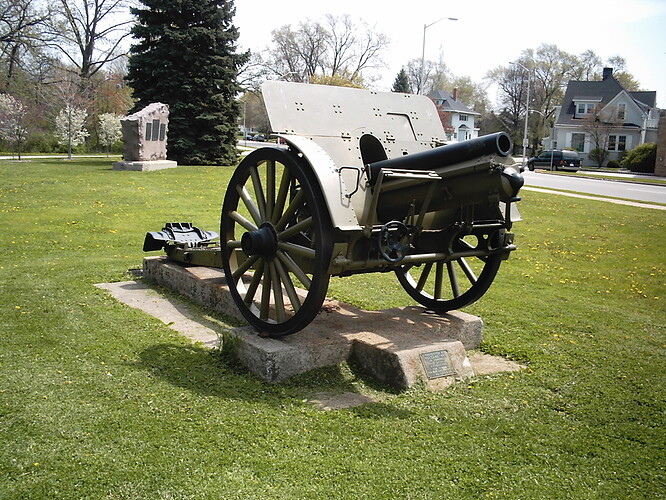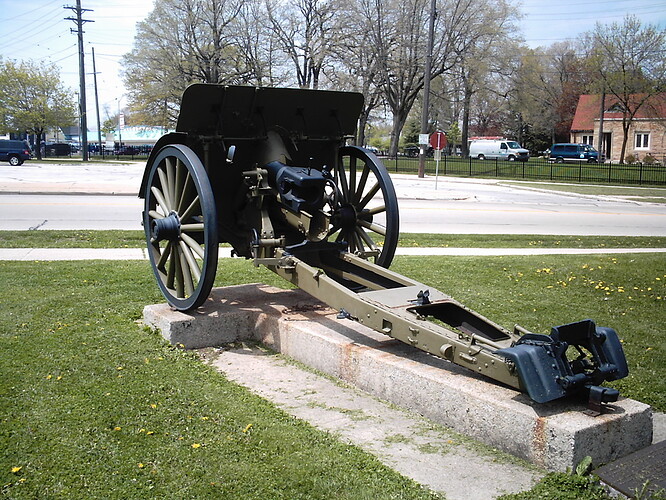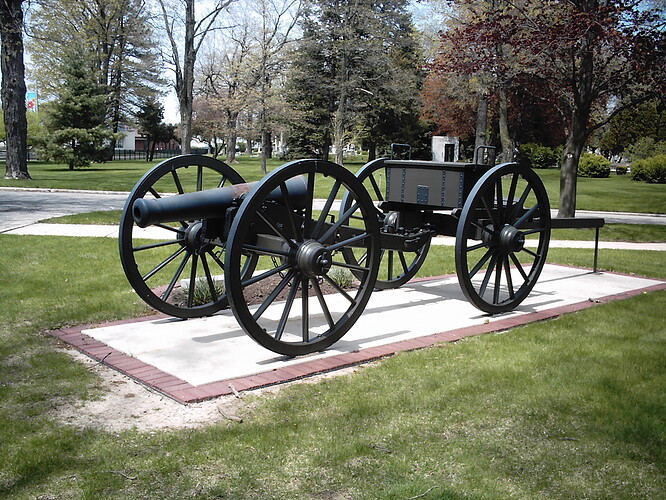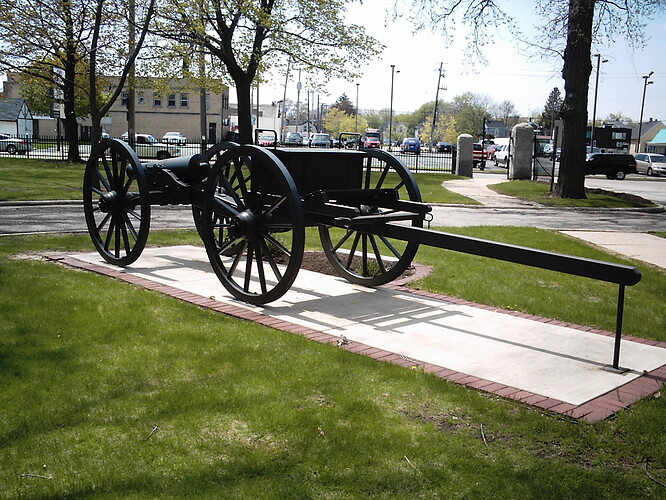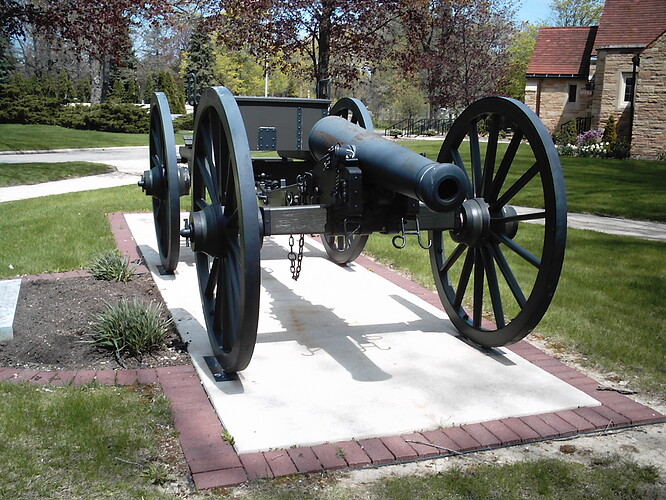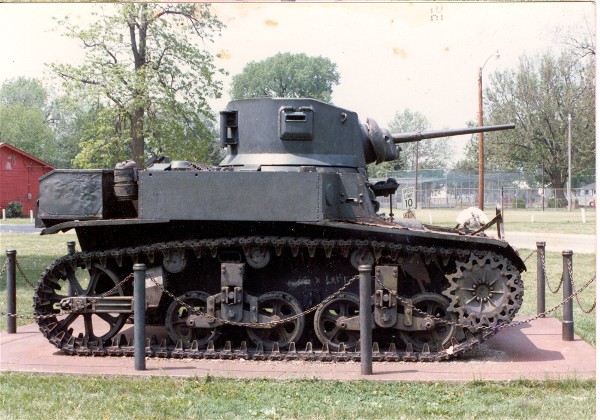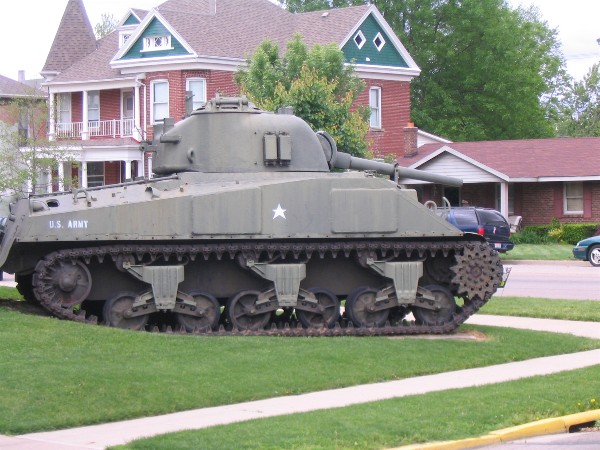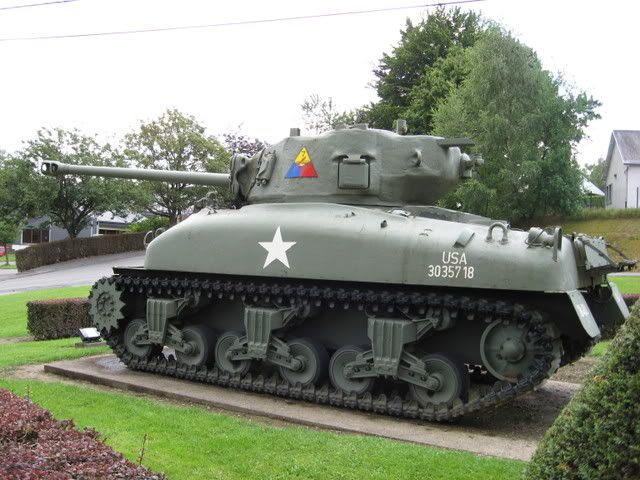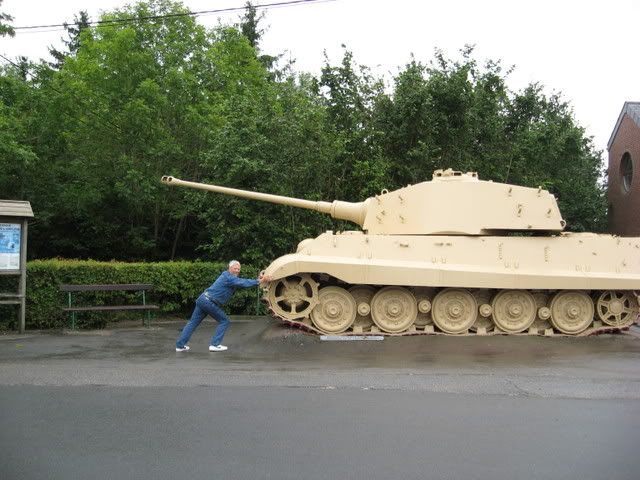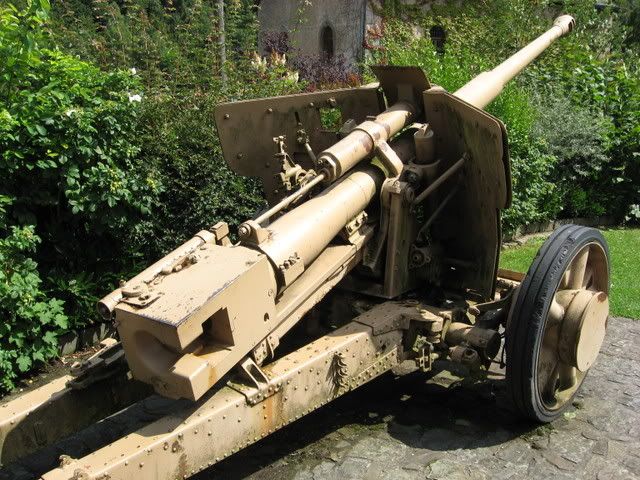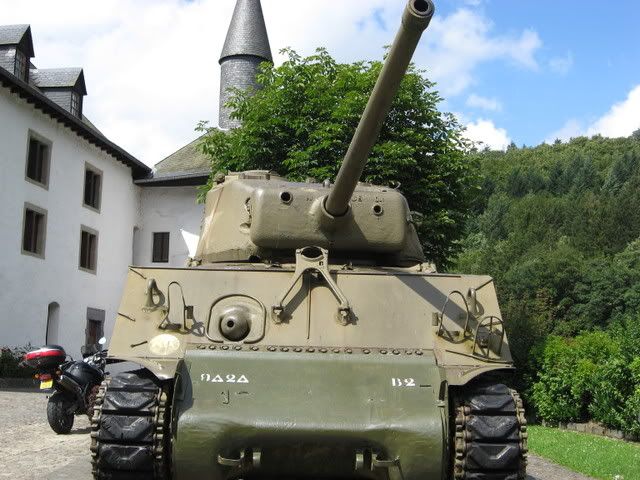Thanks Panzerknacker,
IIRC, four of the French made 65mm guns were positioned on the high ground west of the Jordan Valley
where they helped to hold the Syrians back.
Here are some more pictures that I took in Israel in 1979-80:

A knocked-out Syrian tank from the 1948 War located near the entrance to Kibbutz Degania Aleph.
The tank is a French built Renault R-35. (Syria had been a French mandate after the First World War).
It was knocked out by “Molotov cocktails". I have seen more recent pictures of this tank with it’s
main gun reinstalled. http://www.degania.org.il/eng/tour3.htm

A plaque near the knocked-out Syrian tank from the 1948 war.
This is located at Kibbutz Degania Aleph near the southern tip of Lake Kineret (Sea of Galilee).
Kibbutz Degania Aleph
http://www.degania.org.il/eng/general.htm
http://www.degania.org.il/eng/history3.htm
On the 15th of May, 1948, in the evening, car lights were seen moving from Kfar Hareb (today Kfar Haruv) along the Golan Heights. This was the Syrian invasion force. Facing a reinforced Syrian brigade assisted by an armored battalion and an artillery battalion, stood the units of the “Barak” battalion of the Golani Brigade as well as men from the settlements.
After shelling and bombarding the settlements, part of the Syrian force descended and took position at Tel-el-Kasr (Tel Katzir of today) and from there advanced under the cover of artillery towards the military camp near Tzemach (Kibbutz Ma’agan of today) and towards the new quarantine, east of Kibbutz Ma’agan. The Syrian advance was not decisive and the battle for the Tzemach police station was delayed for as long as the kibbutzim Sha’ar Hagolan and Massada held out. However at daybreak of May 19th, after the inhabitants of Massada and Sha’ar Hagolan were evacuated, the way was open before the Syrian army and after heavy fighting it gained control of Tzemach.
The Syrian tank at Degania’s gates - 1948On the morning of the 20th of May a delegation from the two “Deganias” arrived in Tel Aviv, demanding reinforcements from the high command for the defence of the settlements. Yigael Yadin, then Chief Operations Officer of the General Staff, said: “there is no way out but to let the Arabs draw 20-30 meters closer to the gates of Degania and then fight face to face against their armour”.
The attack on Degania started on the 20th of May at 04:30 hours. Its main objective was the Jordan River bridge north of Degania. Five tanks moved forward under artillery cover, along with several armored cars and a company of infantry.
The armor, deployed before the bridge, gave the infantry cover and hit the positions along the perimeter fence. The defenders evacuated them and deployed in the communications ditches, alongside the fence. There were about seventy of them - Degania members, people from the surrounding settlements, remnants of the “Barak” battalion and additional reinforcements. Some of the Syrian armor was hit by a 20 mm cannon located in the Beit Yerach area, and some continued moving up to the fence. One tank even succeeded in breaking throught it. The defenders hit this tank with “Molotov cocktails” and caused heavy casualties to the infantry behind the armor. The failed attempts and high casualties eroded the confidence of the Syrian army and on the night of the 21st of May the soldiers of the Syrian brigade withdrew from the Degania line and returned to their opening positions at Tel-el-Kasr. The defenders took position again at Tzemach and served as a buffer between the defenders of Degania and the Syrians on the Tel (hill). The Syrians abandoned Tel-el-Kasr in the wake of the Armistice agreements.
Sixty seven of the fallen in the battle for the Jordan Valley are buried in the military cemetery at Degania ‘A’, among them eight members and sons of Degania.














